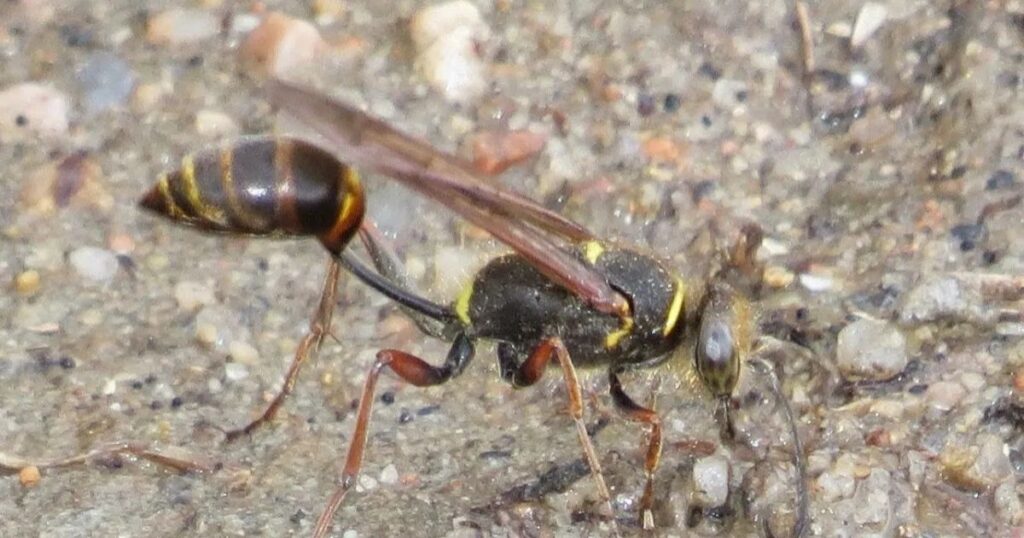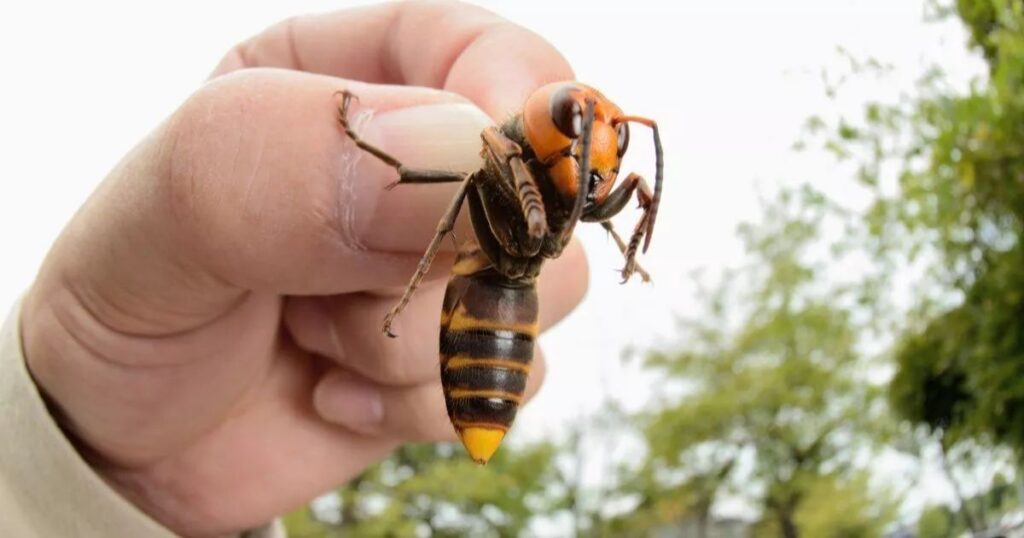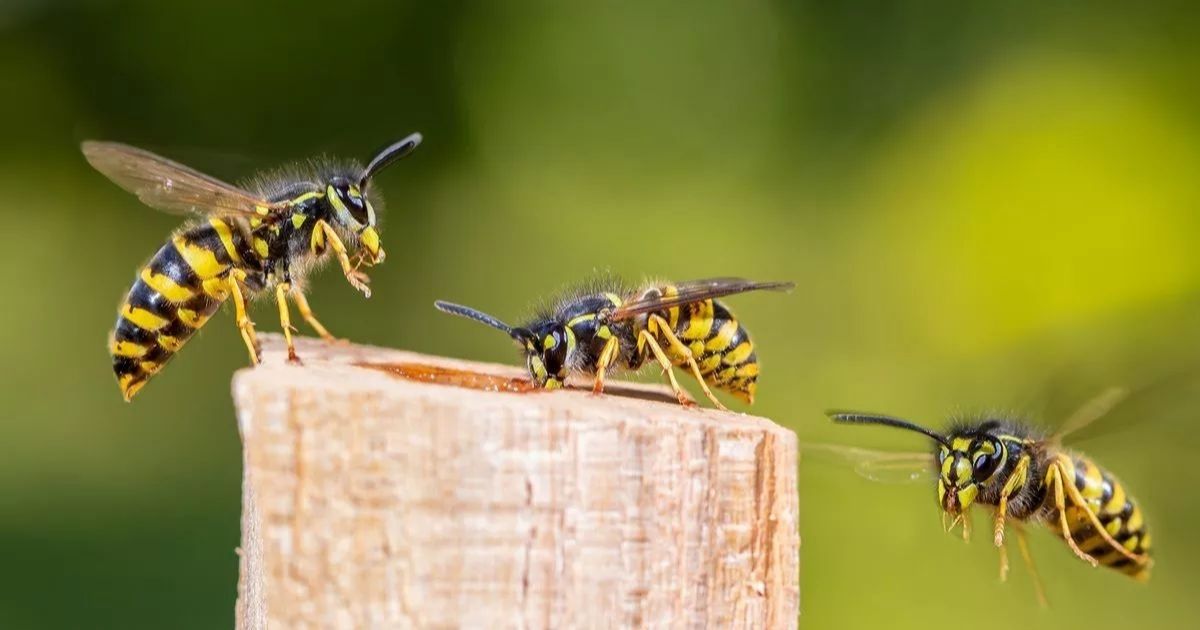Florida’s diverse ecosystem is home to a wide variety of insects, including several species of wasps. While these buzzing creatures play crucial roles in maintaining ecological balance, they can sometimes become a nuisance for homeowners. Understanding the different types of wasps in Florida and how to identify them is essential for peaceful coexistence and effective pest management.
In this comprehensive guide, we’ll explore the five most common wasps found in Florida, their characteristics, nesting habits, and behavior. We’ll also discuss prevention methods when to seek professional help, and the ecological benefits these insects provide. By the end of this article, you’ll be well-equipped to identify and handle wasp encounters in the Sunshine State.
Paper Wasps
Paper wasps are among the most frequently encountered wasps in Florida gardens and residential areas. These slender insects are known for their distinctive nests and relatively docile nature compared to some of their more aggressive cousins.
Identification
Paper wasps are easily recognizable by their slender bodies, which measure about half an inch in length. They sport a striking color combination of golden-yellow bodies and rusty-red wings. When at rest, their wings are folded lengthwise, giving them a sleek appearance. One of the most distinguishing features of paper wasps is their dangling legs during flight, which sets them apart from other wasp species.
Nesting Habits
True to their name, paper wasps construct their nests from chewed wood pulp, creating a papery material. These nests are open and umbrella-shaped, typically containing up to 200 cells. Favorite nesting locations for paper wasps include:
- Under the eaves of buildings
- In shrubs
- On tree branches
The unique architecture of their nests makes them easily identifiable, often resembling an upside-down umbrella with exposed cells.
Behavior and Ecosystem Roles
While paper wasps can sting, they are generally considered docile and less aggressive than other wasp species. They prefer to focus on hunting caterpillars and other garden pests rather than bothering humans. This behavior makes them beneficial allies in pest control for gardeners and farmers.
Paper wasps play a vital role in maintaining the balance of local ecosystems by
- Controlling pest populations
- Pollinating plants
- Serving as a food source for birds and other predators
However, it’s important to note that nests located near high-traffic areas, such as doorways or children’s play areas, may pose a risk of accidental stings. In such cases, professional removal might be necessary to ensure safety.
Also read this post:we’ll explore the relationship between possums and dogs,
Yellow Jackets
Are perhaps the most notorious of Florida’s wasps, known for their aggressive defense of their nests and their attraction to human food sources. These bold black and yellow striped insects are a common sight at picnics and outdoor gatherings.
Identification
Yellow jackets are easily recognizable by their distinctive coloration:
- Bright yellow and black bands on their bodies
- A characteristic black dot on their abdomens
- Size ranging up to half an inch in length
Their flight pattern is also unique, featuring a distinct hovering motion that sets them apart from other flying insects.
Nesting Habits
Unlike paper wasps, yellow jackets prefer to build their nests in more concealed locations:
- Underground cavities
- Wall voids in buildings
- Hollow trees
Their nests are constructed from chewed wood fibers and can house up to 4,000 individual wasps, making them one of the largest wasp colonies in Florida. The size and location of these nests can make them particularly dangerous when disturbed.
Behavior and Ecosystem Role
Yellow jackets are known for their aggressive nature, especially when defending their nests. They are carnivores and scavengers, which leads them to frequently interact with humans in search of food. Common attractants for yellow jackets include:
- Picnic tables with food
- Open soda cans
- Trash cans with food waste
While their aggressive behavior can make them a nuisance, yellow jackets do play important roles in the ecosystem:
- Controlling insect populations
- Acting as scavengers, helping to break down organic matter
- Serving as pollinators for some plant species
However, their tendency to build nests in high-traffic areas and their aggressive defense mechanisms make them a significant safety concern. Multiple stings from yellow jackets can be medically dangerous, especially for individuals with allergies.
Red Wasps

Red wasps, with their fiery appearance, are a striking presence in Florida’s landscapes. These solitary wasps are known for their bold coloration and their role as beneficial pest controllers.
Identification
Red wasps are slightly larger than yellow jackets, growing up to 1 inch in length. Their most distinguishing features include:
- Burnt orangey-red colored abdomens
- Some yellow markings on their bodies
- Reddish wings that stand out during flight
Nesting Habits
As solitary wasps, red wasps build smaller nests compared to their social counterparts. Their nesting preferences include:
- Trees
- Shrubs
- Under the eaves of buildings
Red wasps construct their nests from paper-like material, similar to paper wasps, but on a smaller scale. These nests are often harder to spot due to their size and the wasps’ solitary nature.
Behavior and Ecosystem Role
While red wasps can deliver a painful sting, they are generally less aggressive than yellow jackets when left undisturbed. They play a crucial role in Florida’s ecosystem by:
- Hunting caterpillars, flies, and spiders to feed their larvae
- Helping to control populations of garden and crop pests
- Serving as pollinators for various plant species
Red wasps tend to mind their own business when undisturbed, making them less of a nuisance than some other wasp species. However, nests built near entryways or in areas with frequent human activity may need to be removed to prevent accidental encounters.
Mud Daubers

Mud daubers are unique among Florida’s wasps, known for their distinctive nests and generally peaceful disposition. These solitary wasps are often welcomed by gardeners for their role in pest control.
Identification
Mud daubers have a distinctive appearance that sets them apart from other wasp species:
- Long, thin waists
- Dark blue metallic bodies
- Long legs with a characteristic hunched stance
- Size ranging from 1/2 to 1 inch in length
Nesting Habits
True to their name, mud daubers construct their nests from mud. These nests are highly recognizable and often resemble:
- Organ pipes
- Mud tubes attached to walls and eaves
Each nest contains several cells where the female mud dauber stores paralyzed spiders and other insects as food for their larvae. These unique nests are often found on:
- Exterior walls of buildings
- Under eaves
- In sheltered outdoor areas
Behavior and Ecosystem Role
Mud daubers are known for their docile nature and rarely bother humans. They play several important roles in Florida’s ecosystem:
- Controlling spider populations, including potentially dangerous species like black widows and brown recluses
- Serving as pollinators for various plants
- Acting as a food source for birds and other predators
While they can sting, mud daubers are quite peaceful and tend to avoid confrontation. Their presence in gardens is often beneficial, helping to keep pest populations in check without posing a significant threat to humans.
Bald-Faced Hornets

Despite their name, bald-faced hornets are a type of yellowjacket wasp. These large, striking insects are known for their impressive nests and aggressive defense mechanisms.
Identification
Bald-faced hornets are easily distinguishable from other wasp species:
- Black and white bands across their abdomens
- White faces, which give them their “bald-faced” moniker
- Size up to 1/2 inch in length
- Larger and more robust than most other wasp species in Florida
Nesting Habits
Bald-faced hornets construct some of the most impressive and recognizable nests among Florida’s wasps:
- Large, football-sized nests
- Built-in trees, under eaves, and other sheltered locations
- Constructed from chewed wood pulp, creating a papery material
- Can house up to 700 individual hornets
These large nests are often visible from a distance and can become a focal point in the landscape.
Behavior and Ecosystem Role
Bald-faced hornets are known for their aggressive defense of their nests. They play several important roles in the ecosystem:
- Preying on flies, caterpillars, and other pests
- Serving as pollinators for various plant species
- Acting as a food source for birds and other predators
However, their aggressive nature and painful stings make them a significant concern for homeowners. Multiple stings from bald-faced hornets can be medically dangerous, especially for individuals with allergies. Due to their large colony sizes and defensive behavior, nest removal should always be handled by professionals.
Prevention and Recommended Maintenance
While some wasp species are beneficial and relatively docile, preventing unwanted nests and encounters is key to peaceful coexistence. Here are some effective strategies to discourage wasps from nesting around your home:
Yard Maintenance:
- Keep your yard free of piles of mulch, stones, and debris that could provide nesting sites.
- Regularly clear away old nests to discourage reuse.
- Prune back vegetation near your home to reduce potential nesting spots.
Home Exterior Maintenance:
- Seal cracks and crevices in your home’s exterior.
- Repair or replace damaged window screens.
- Caulk gaps in walls to eliminate potential entry points for wasps.
Food Source Management:
- Use lidded trash cans to prevent access to food waste.
- Keep pet food bowls inside or clean up after feeding.
- Promptly clean up spills and crumbs from outdoor eating areas.
- Remove ripe fruit from trees and the ground regularly.
Natural Deterrents:
- Plant wasp-repelling herbs like mint, thyme, or citronella around your property.
- Hang fake wasp nests to deter real wasps from building nearby.
- Install nesting boxes for insect-eating birds like chickadees to naturally control wasp populations.
Regular Inspections:
- Conduct periodic checks of your property, especially during spring and early summer when wasps begin nesting.
- Pay close attention to eaves, overhangs, and sheltered areas where wasps commonly build nests.
Water Management:
- Fix leaky outdoor faucets and pipes.
- Ensure proper drainage around your home to prevent standing water, which can attract wasps.
Lighting Considerations:
- Use yellow “bug lights” for outdoor lighting, as they are less attractive to insects.
- Minimize the use of bright white lights near entryways during evening hours.
By implementing these preventive measures and maintaining your property, you can significantly reduce the likelihood of wasp infestations and create a less hospitable environment for these insects.
When to Call a Professional
While many wasp encounters can be managed through prevention and careful observation, there are situations where professional intervention is necessary. Here are some scenarios that warrant contacting a pest control expert:
Large Underground Yellow Jacket Nests:
- If you discover a sizable yellow jacket nest near high-traffic areas like patios, doorways, or playgrounds, it’s crucial to call a professional. The aggressive nature of yellow jackets and the potential for multiple stings make these nests particularly dangerous.
Bald-Faced Hornet Nests in Difficult Locations:
- Large bald-faced hornet nests in trees or under eaves that are challenging to avoid require expert removal. The aggressive defense mechanisms of these hornets can lead to multiple stings, which can be medically hazardous.
Wasp Nests Inside Wall Voids:
- If you hear buzzing from inside your walls but can’t locate the nest, it’s time to call a professional. Attempting to remove these hidden nests yourself could agitate the wasps and lead to them entering your living space.
Recurring Nest Problems:
- If you find that wasp nests keep appearing in the same areas season after season, a pest control expert can help identify and seal entry points to prevent re-infestation.
Nests Near Sensitive Individuals:
- For homes with residents who are allergic to wasp stings or have other health concerns, professional removal is the safest option. Pest control experts have the necessary protective equipment and techniques to safely eliminate the nest.
Multiple Nests on Your Property:
- If you’re dealing with several wasp nests across your property, it’s best to have a comprehensive assessment and removal plan from a professional.
Nests in Hard-to-Reach Places:
- Wasp nests located in high or difficult-to-access areas, such as on the second story of a building or in dense vegetation, should be handled by professionals with the right equipment.
Large Colonies:
- Any nest that appears to house a large number of wasps (hundreds or more) is best left to professionals due to the increased risk of multiple stings.
Uncertainty About Species Identification:
- If you’re unsure about the type of wasp you’re dealing with, a pest control expert can properly identify the species and recommend the most appropriate course of action.
Prevention and Long-Term Management:
- Professional pest control services can offer ongoing prevention strategies and treatments to keep your property wasp-free in the long term.
Remember, attempting to remove large or aggressive wasp nests without proper training and equipment can be extremely dangerous. Pest control professionals have the expertise, tools, and protective gear necessary to safely and effectively manage wasp infestations while minimizing risks to you and your family.
Wrapping Up
Understanding the common wasps in Florida and how to identify them is crucial for maintaining a safe and harmonious environment. From the relatively docile paper wasps and mud daubers to the more aggressive yellow jackets and bald-faced hornets, each species plays a unique role in Florida’s ecosystem.
By familiarizing yourself with these wasp species, their nesting habits, and behaviors, you can make informed decisions about when to leave them and when to seek professional help. Remember that while wasps can be a nuisance, they also provide valuable services such as pest control and pollination.
Implementing preventive measures and maintaining your property can go a long way in reducing unwanted wasp encounters. Regular yard maintenance, proper food storage, and natural deterrents can help create an environment that’s less attractive to wasps while still allowing beneficial insects to thrive.
When faced with large nests, aggressive species, or nests in sensitive areas, don’t hesitate to call in pest control experts. Their knowledge and specialized equipment ensure safe and effective wasp management, protecting you and your family from potential stings and allergic reactions.
CONCLUSION
Florida’s diverse wasp population presents both challenges and benefits to residents. By learning to identify the five common wasp species – paper wasps, yellow jackets, red wasps, mud daubers, and bald-faced hornets – you’re better equipped to handle encounters and make informed decisions about nest management.
Remember that while some wasps can be aggressive, many species are beneficial to gardens and ecosystems. Striking a balance between human safety and ecological preservation is key. Through proper identification, prevention methods, and knowing when to seek professional help, you can coexist peacefully with Florida’s wasp population while enjoying the benefits they bring to your local environment.
Stay informed, stay safe, and appreciate the vital role these fascinating insects play in Florida’s natural world. You can navigate wasp season confidently and responsibly with the right knowledge and approach.
FAQs
What are the most common wasps in Florida?
Florida’s most common wasps include paper, yellow jackets, red wasps, mud daubers, and bald-faced hornets. These species are frequently encountered in gardens, yards, and buildings throughout the state.
What are the most common wasps?
Globally, the most common wasps include various species of yellow jackets, paper wasps, and hornets. These social wasps are widely distributed and often come into contact with humans due to their nesting habits near human structures.
What are the largest wasps in Florida?
The largest wasps commonly found in Florida are the cicada killers, which can grow up to 2 inches in length. Bald-faced hornets are also relatively large, reaching up to 3/4 inch in length, making them one of the more imposing wasp species in the state.
What wasp is aggressive in Florida?
Yellow jackets are known to be the most aggressive wasps in Florida, readily defending their nests and often attracted to human food sources. Bald-faced hornets also display aggressive behavior when their nests are threatened, making both species a concern for Florida residents.











